Named after the United States Navy’s Bureau of Ships “water-tightness specifications of MIL-SHIPS-W-2181,” American watch brand Bulova brings back two variants of its U.S. Navy prototype dive watch from the 1950s, which take a closer look at today in our latest visit to the WatchTime Archives.

The latest addition to Bulova’s “Archive Series” is a reissue based on the design of one of the brand’s rarest pieces, a hand-wound military dive watch from the late 1950s that never made it to production. WatchTime was able to get both variants of the MIL-SHIPS for an editorial morning roll call, ahead of their release in 2021.
The original version from 1957 was intended to become the standard diving watch for the U.S. Navy. According to the official diving manual from that period, the task was clear: “A pressure-proof wrist watch is essential to the scuba diver for computing time of dive, controlling rate of descent and ascent, and for timing various operations. […] A pressure-proof, nonmagnetic, wrist watch that incorporates certain desirable features not available in the present watch is under development. The watch will probably be available for service test during 1958.” And it indeed was.
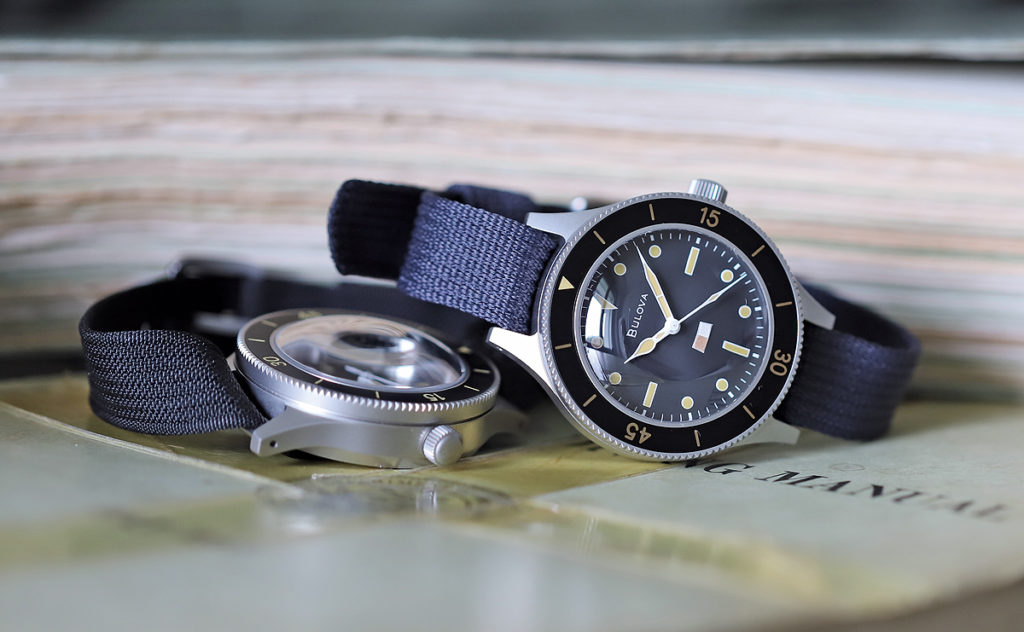
Completing Basic Training in 1958
According to the unclassified reports, on Feb. 5, 1958, representatives of the United States Navy’s Bureau of Ships (BuShips), “Code 565, delivered by hand, three Bulova submersible wrist watches (preproduction samples) for test in accordance with contract NObs 73016.” The three watches had been “designed and developed under the above contract to conform to ‘Bureau of Ships Contract Specification, Wrist Watch, Submersible,’ SHIPS-W-2181 of 5 December 1955,” which included, among requirements relating to water resistance, moisture indicator and legibility, a bezel “designed to be rotated and set by hand without tools” and “protected against unintentional movement caused by abrasion, shock and vibration.”
Bulova had already provided three dive watches a year before, all of which had to be returned to the manufacturer after having been “found to leak at depth.” Although the following “three watches evaluated […] were definitely more watertight than the watches submitted originally in May 1957,” moisture had still entered the case, “though in small, and possibly, insignificant quantity,” the U.S. Navy Experimental Diving Unit’s final report from March 10, 1958, stated. More precisely, “Three pre-production samples of a Bulova submersible wrist watch manufactured under BuShips contract in accordance with MIL-SHIPS-W-2181 are evaluated.
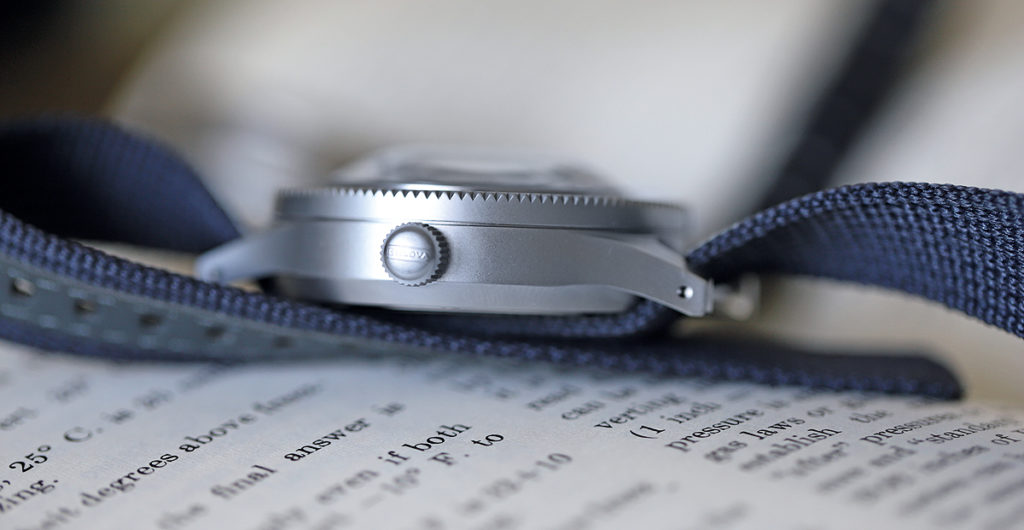
Watertightness, readability-in-darkness and various subjective tests are reported. The specified test depth is 392 feet (175 psi), held for one hour. The watch face includes a moisture color-indicator and also a control color patch and change in color has been used as an acceptance criterion for watertightness. Two of the three watches indicated moisture, one during testing and the other several days after testing. No water or moisture was noted in the case. Readability of the watch in darkness, underwater, was satisfactory with the exception of the second hand which was too thin to be seen. Several physical improvements are recommended for acceptance in that the specified watertightness test has not been met.” The report also recommended that “the second hand be made wider,” an “improved [shorter] strap be furnished,” and that more “protection be provided [for] the stem.” Lastly, the evaluation report concluded that the “watch’s outer, rotatable ring” appeared to have a tendency “to clog and become inoperable when working in sand or silt.” In short, it was recommended “that the watch not be accepted until it is definitely determined that no water or moisture is entering the case.”
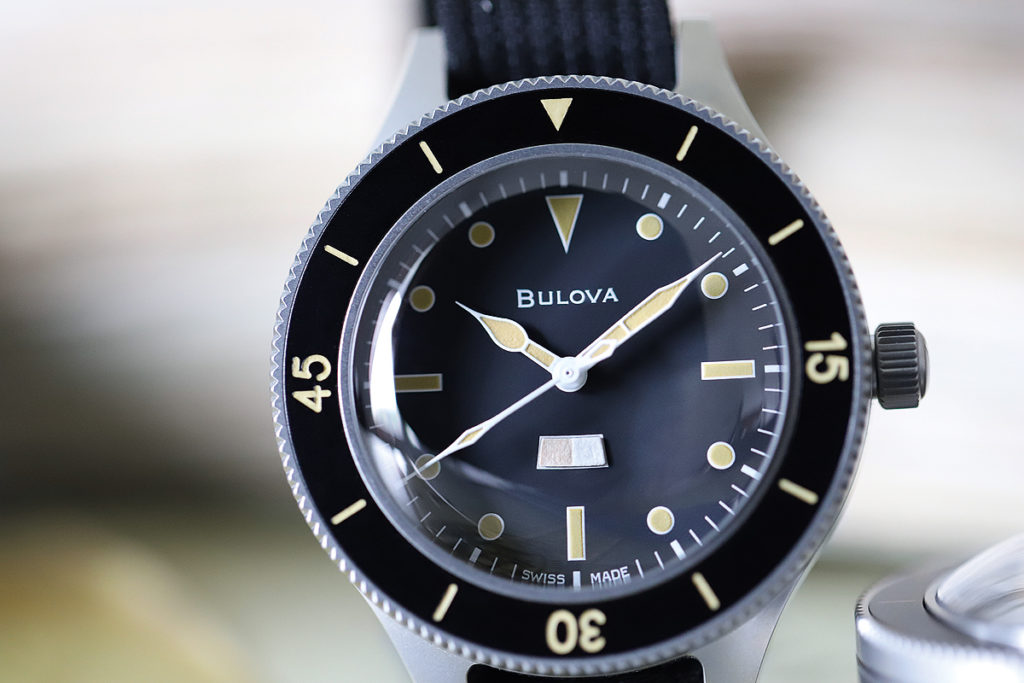
Therefore, on April 3, 1958, representatives of BuShips, Codes 538 and 565, and of Bulova Corporation delivered another five “Bulova submersible wrist watches” with “minor modifications towards final acceptance.” And, according to the next evaluation report, dated May 7, 1958, this batch of watches appears to have performed significantly better. “Of three watches tested, one failed in that positive indication was recorded on the color indicator. The watch which failed, however, continued to run and did not show evidence of moisture, fog, or droplets on the underside of the crystal or on the face. It is suspected that the watch which failed was water-tight and that the indicator was faulty.”
Despite the positive result, the American watchmaker made the decision not to continue with the production of its “submersible wrist watch” and “to focus on the development of The Accutron” instead. The United States Navy therefore went with the Fifty Fathoms, which had already provided the blueprint for the modern dive watch in 1953 (due to the 1933 “Buy American Act” the U.S. Navy could not purchase Swiss watches directly, so Allen V. Tornek Co., then importer of Blancpain, became the American supplier of Blancpain for the U.S. Navy).
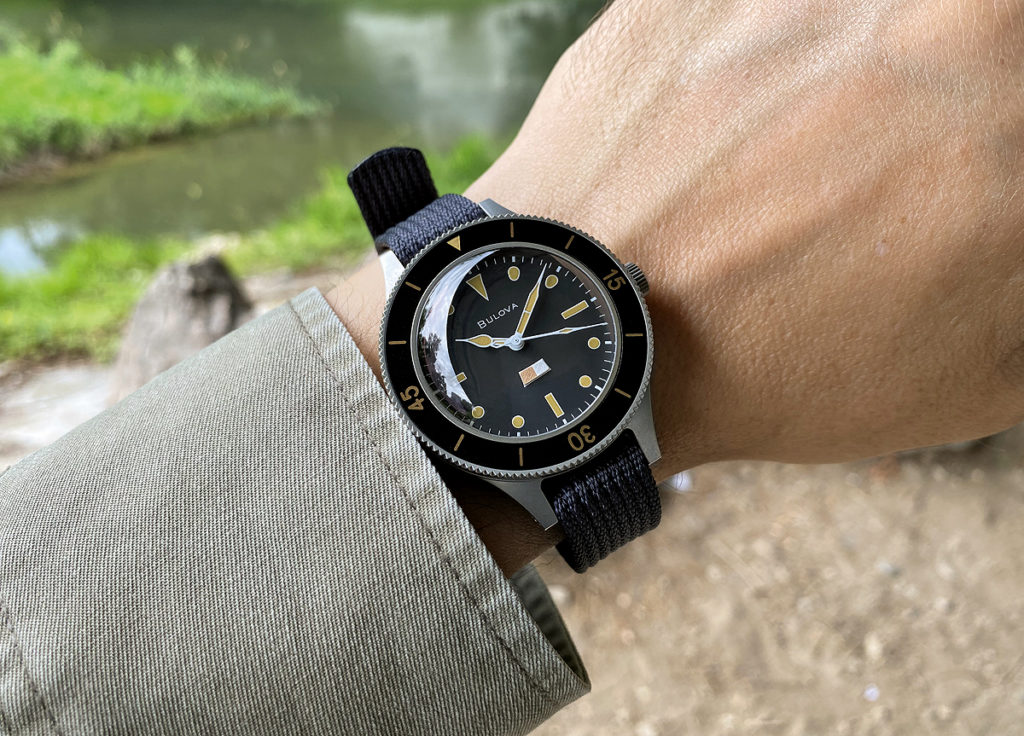
Rare as Hen’s Teeth
Based on the data provided by the U.S. Navy, it appears that Bulova did not produce more than a handful of prototype watches during the evaluation phase (depending on how many identical watches were submitted for the tests, the number would be anywhere between five and 11, based on the cited reports). And even fewer are currently known to have survived the last 64 years. On March 10, 2010, for example, Antiquorum auctioned off a Bulova “Prototype Diver’s Wristwatch, No. U.D.T. 21 0182” for $14,400 (Lot 280). According to Antiquorum, this particular model “was intended by the Navy to be a replacement for the obsolete Elgin ‘Canteen’ diver’s watch. The watch featured a unique two-piece water-resistant case back, a thick brass anti-magnetic case holder, and a newly designed movement — the 17 jewel manual wind 10 BPCHN. The unique movement featured a clutch mechanism that prevented the watch from being over-wound.”
In short, and looking at the current hysteria in the vintage-watch market, the existence of Bulova’s latest re-edition will most likely not have an impact on the few pieces available on the vintage market, unless the launch of the re-edition would flood out a large number of previously unknown pieces. Instead, it will finally be made officially available.
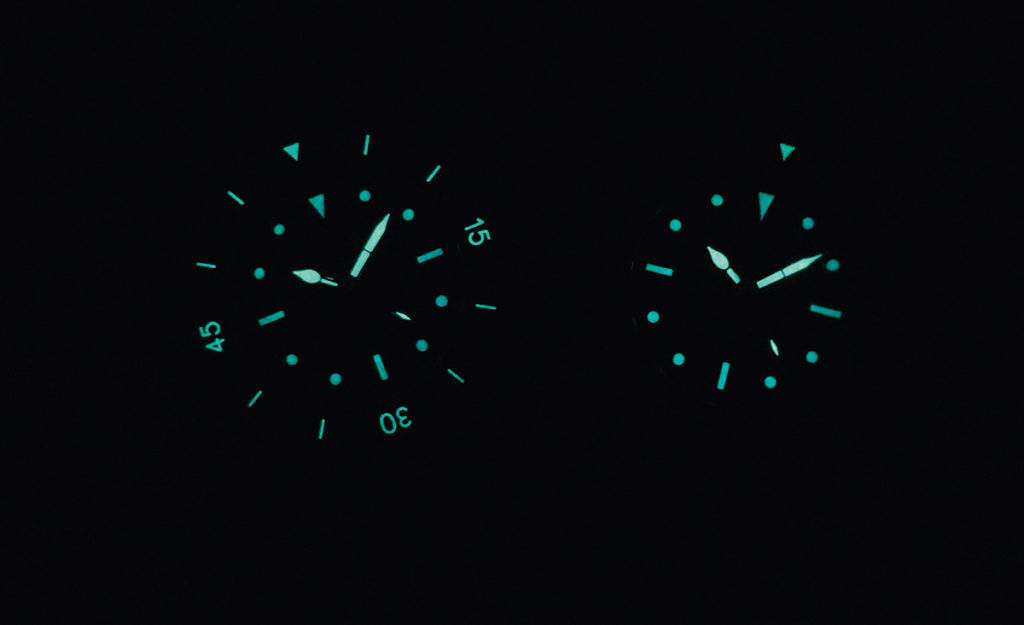
The MIL-SHIPS is the latest release in Bulova’s recently expanded roster of historical watches, which includes the Military Collection pieces launched in 2020. It also comes on the heels of other vintage-inspired Bulova models that have garnered significant attention among collectors and watch enthusiasts, like the Oceanographer Snorkel, Computron LED, Chronograph C “Stars & Stripes,” and, perhaps most notably, the Bulova Lunar Pilot “Moon Watch” chronograph in 2015.
Two Variants
Bulova decided to offer the MIL-SHIPS re-edition in two variants. The more expensive version (Ref. 98A265) is limited to 1,000 pieces; the significantly less expensive counterpart (Ref. 98A266) is going to be part of the brand’s regular production.
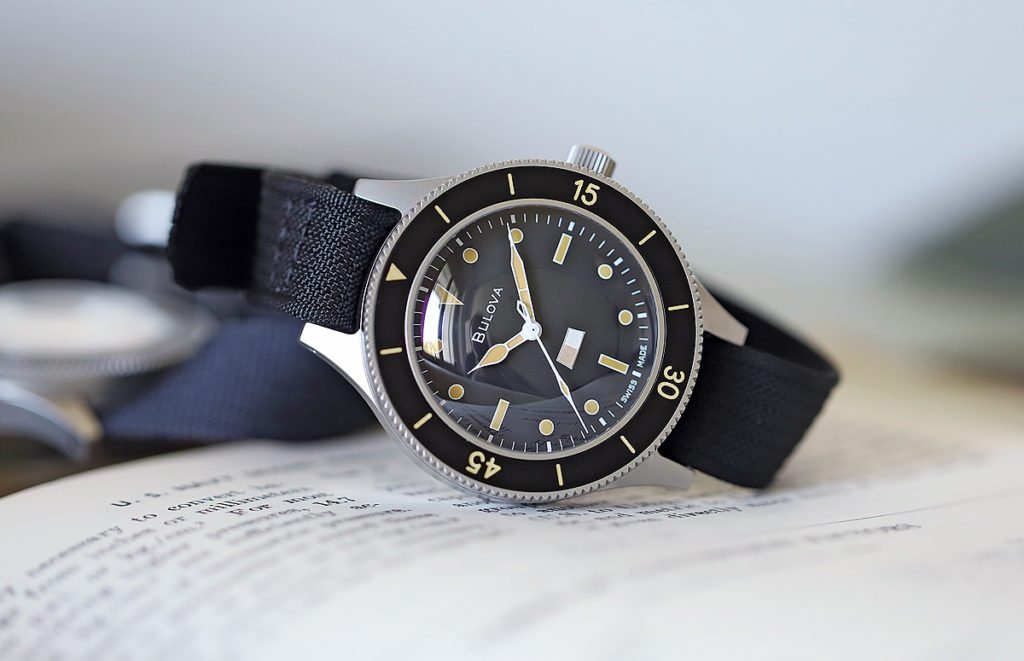
Both share an almost identical design with moisture indicator at 6 o’clock, a 41-mm case with sandblasted finish and 200-meter water resistance, a domed sapphire crystal, cathedral-style hands, screw-in crown and two-piece screw-down caseback, which allows the central piece’s engraved diving helmet to be perfectly aligned. While the limited edition comes with a more detailed engraving (and individual number), the unlimited version features a much simpler, etched version of the diving helmet. Regardless of that, both caseback versions are partially covered by the textile strap (black for the limited edition, blue for the unlimited version).
More importantly, the limited version offers more luminous material on both the dial and bezel (which can only be rotated when pushed down), a “Swiss Made” label on the dial, and a Sellita SW200-1, which results in a price tag of $1,990. The unlimited version, on the other hand, costs $895 and is powered by a Miyota 82S0 movement.
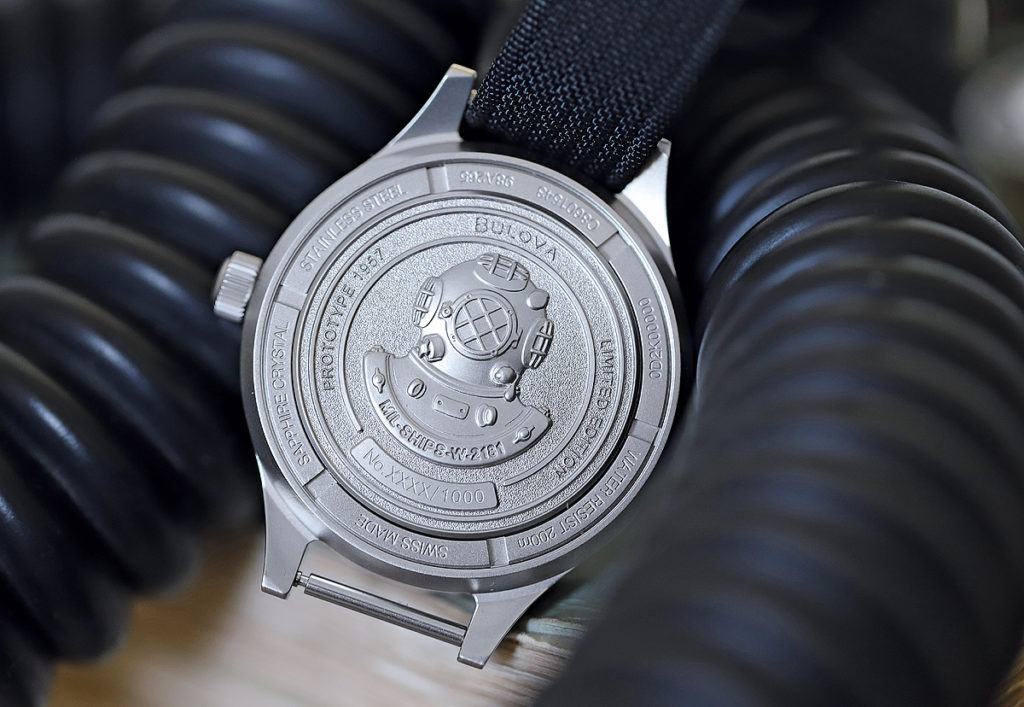
From a purist’s perspective, both movements offer little novelty to spice up a collection. Therefore, a hand-wound, perhaps even more exclusive limited edition (next to the Miyota-powered version) equipped with a sterile caseback might have gotten collectors even more excited than the Sellita-based version. Visually, however, both re-editions undoubtedly offer a rather unexpected take on the vintage dive watch theme in today’s environment, thanks mostly to the hands (taken from the vintage MIL-W-3818-A military model) and the unusually narrow lugs. This is a rather surprising conclusion, given the original design it was based on, and the Swiss dive watch it once had to compete against. In short, fans of modern re-editions of vintage designs can stand at ease, and enjoy the fact that this piece of Bulova’s incredible history is now, for the first time, made officially available, and that this version would have passed the evaluation phase with flying colors. Dismissed.
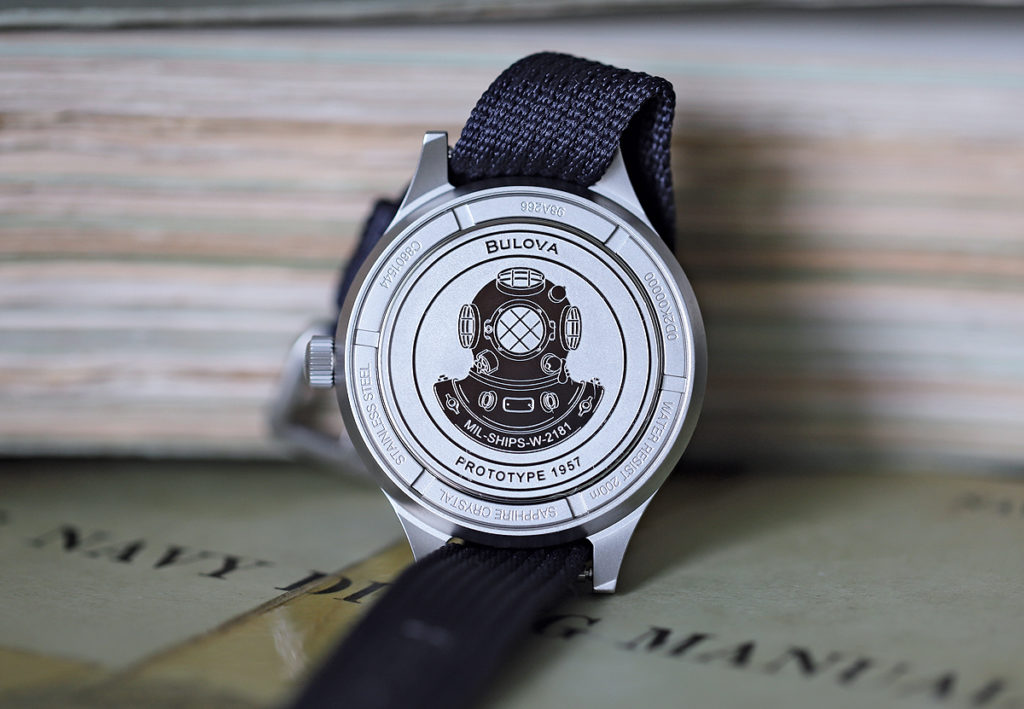
SPECS:
Manufacturer: Bulova Corporation, Empire State Building, 350 Fifth Avenue, New York, NY 10118
Reference number: 98A265
Functions: Hours, minutes, seconds
Movement: Self-winding mechanical Caliber Sellita SW 200-1, 26 jewels, 28,800 vph (4Hz), approx. 41-hour power reserve, diameter = 25.6 mm, height = 4.6 mm
Case: Stainless-steel case with two-piece screw-down caseback, screw-in
crown, domed sapphire crystal, water resistant to 200 m, push-down locking top ring, Super-LumiNova markers and hands, moisture
indicator strip on the dial
Strap and clasp: Black textile strap with buckle
Dimensions: Diameter = 41.00 mm, height = 15.42 mm, length = 50 mm
(lug to lug)
Variations: Ref. 98A266 with Miyota 82S0 automatic movement and blue
textile strap ($895)
Limited edition of 1,000 pieces
Price: $1,990
This article originally appeared in the September-October 2021 issue of WatchTime.


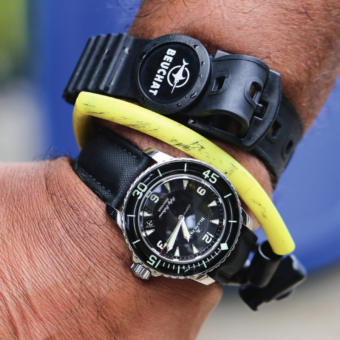
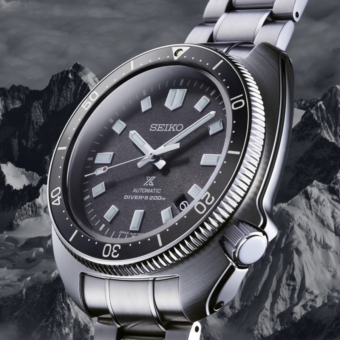
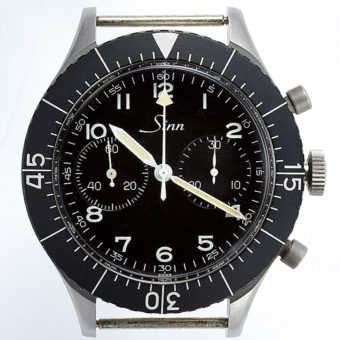
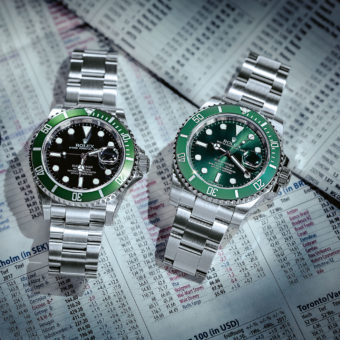
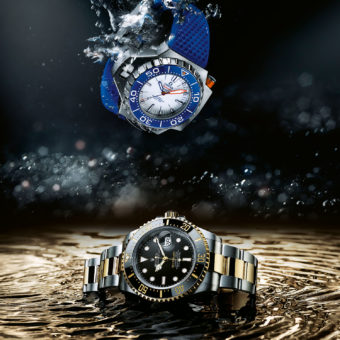
another pricey watch with no date window
Actually the Bulova “MIL-SHIPS-W-2181”” is a bit large for my wrist size, however it has an elegant, simple beautiful rugged appearance that is appealing, hence, regardless of size I would make the purchase with the Sellita SW 200-1 movement. I love the domed sapphire crystal.
M quanto costa
A low end miyota movement for $900 or a low end Sellita movement for $2k, no thank you. This doesn’t make any sense by any standard. Weird 18mm lug width looks awkward for the case diameter. Visually not especially unique but it has its charm. The price/value proposition will keep me (and I suspect many others) from taking a chance on this one. Too many other, more compelling options at that price profile.
Great article! I’m so glad someone is producing affordable pieces like this Mil Ships. Good for Bulova!
I was interested in the Swiss movement limited edition of the dive watch but was put off when I found out that Bulova’s “official” advertised release date they sent out was not true. They’d actually made the watch available before that and it sold out. Turns out the Bulova company is as leaky as some of the original prototypes. I wouldn’t patronize Bulova even if they made more of the Swiss movement supplied watches available again. If they can’t be trusted to supply simple correct information on releasing a product, I wouldn’t trust them about anything they say about their watches. How stupid can they be.